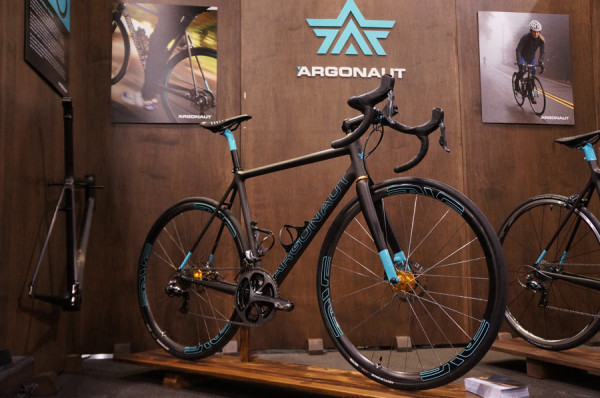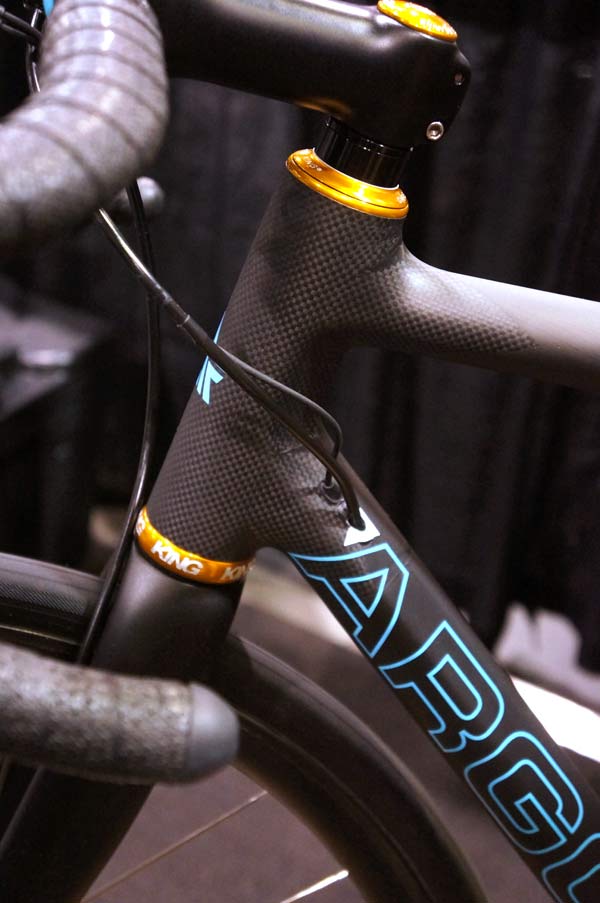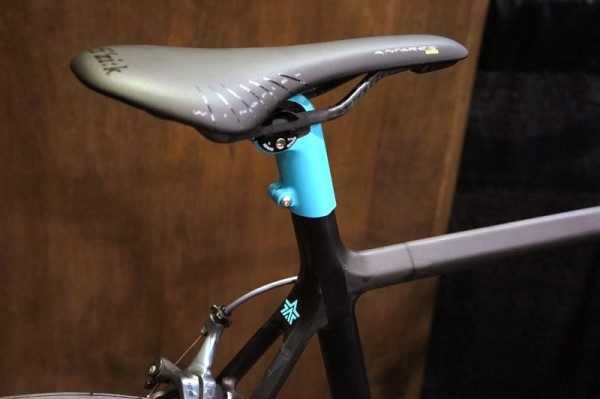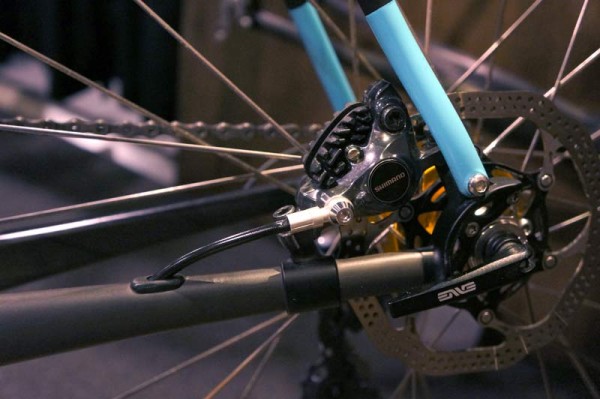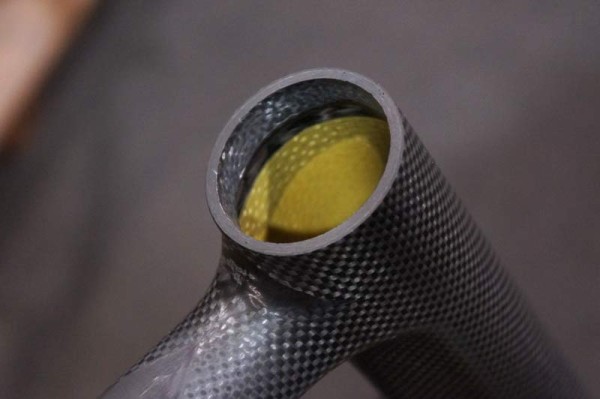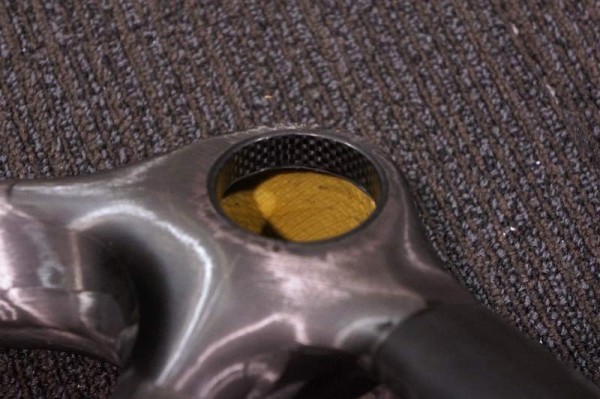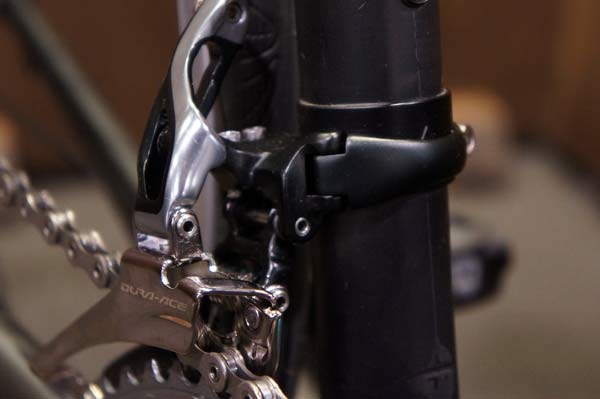Argonaut founder Ben Farver sent some fantastic photos of his new Gravel Racer for our pre-show interview, but seeing it in real life was even better.
He built it to handle competitive events like the Oregon Stampede, which is about 70% gravel. It’s not a a gravel grinder, and not meant to add rack or panniers. It’s a race ready bike that just happens to be designed for rough surfaces.
To do that, he takes your ideal road race bike and makes it a bit more stable. For Ben’s own bike, that meant about 5mm longer chainstay length, 3mm more BB drop and half a degree slacker head angle. It’s all custom though, so your version will be right for you.
“The idea is to expand your range,” he said. “To let you get further on more roads.”
This bike won best in show for NAHBS 2014.
This one’s for a customer that travels with it and wanted a standard seat post, but Farver says he’d still use the ISP on most frames but build in a bit more compliance than on the road bikes. If you recall from our long term review, Ben uses the ISP to dial in the ride feel all the way up to the saddle.
The non-drive chainstay only had to be reinforced under the caliper mount. The seat stay is the same, so ride quality should be the same. It’s 70g more for the disc dropouts and reinforcement, and Farver says a complete disc bike will be about 1.5 pounds heavier than a comparably built rim brake bike.
The Gravel Racer will sell for $6,700 $6,500 for frame and fork, same as their standard road bike framesets go for $6,500 with rim brakes in mind. Because it’s all custom, it can basically become a disc brake road bike, too.
The SL prototype we saw last year didn’t become a separate model. Instead, he infused the ballistics material into all of the frames. Farver says he was initially thinking the SL frames would be a little more delicate and have to have a shorter warranty. But, they ended up being stronger, so he put it in all the bikes, including the new gravel racer.
So, in addition to being lighter, the alternate material adds durability while allowing a higher proportion of lighter weight hi-mod carbon. And it soaks up vibration. The result is a bike that’s a bit lighter but a lot smoother.
Another running change to all frames is the removal of the braze-on front derailleur mount. The frames now require clamp-on front mechs, so he builds on a small alloy ring since the frame tubes are not round.
